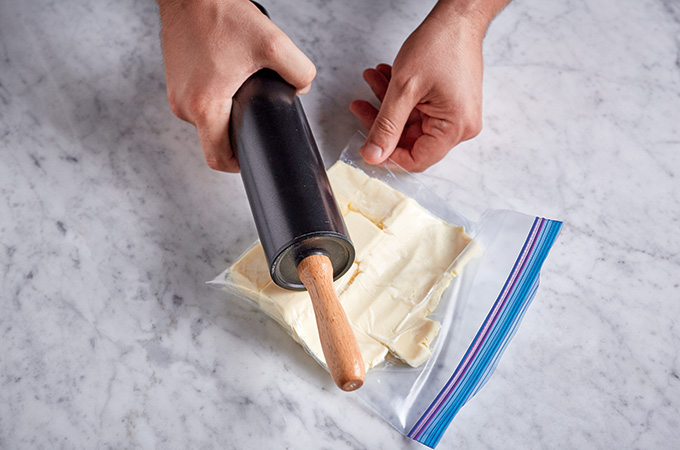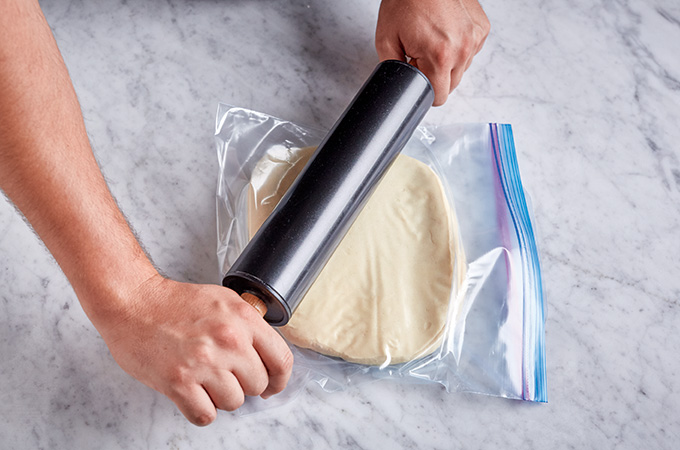Here are the 4 main steps for making croissants at home. After making this first batch, you'll be on your way to master baker status!
1. Butter and dough
The first step involves letting the dough rise and rolling out the butter. Let’s get this recipe going!
-
1 / 4
Wait until the dough has risen and doubled in volume.
-
2 / 4
Place the butter in a resealable plastic bag and roll it out so that it takes the shape of the bag.
-
3 / 4
Fold the dough over itself to release the air.
-
4 / 4
Place the dough in a larger resealable plastic bag and roll it out so it takes the shape of the bag. It’s time to put it all in the refrigerator!
2. Buttering
The second step focuses on the secret element behind every good croissant: butter. Give full rein to your favourite guilty-pleasure ingredient — delicious results are on the way!
-
1 / 4
Remove both the butter and the dough from the refrigerator.
-
2 / 4
Place the butter on top of the dough in a diamond shape.
-
3 / 4
Fold the ends of the dough toward the centre.
-
4 / 4
Seal the dough well to prevent any butter from leaking out.
3. Folding
Put your origami skills to use for this penultimate folding task. You’ll obtain the the desired layered effect if you precisely execute the steps below.
-
1 / 4
Roll out the dough into a rectangle with straight, even sides.
-
2 / 4
Fold a quarter of the dough over itself. Brush off any excess flour.
-
3 / 4
Fold a quarter of the other end over the dough.
-
4 / 4
Fold the dough in half. Cover the dough with plastic wrap and refrigerate for 30 minutes. Repeat all of the folding steps a second time.
4. Shaping
The very last step is all about meticulousness and attention to detail. You may just discover a hidden talent!
-
1 / 4
Divide the dough into four equal rectangles. Cut the rectangles across the bias to create triangles.
-
2 / 4
Make a perpendicular incision of 1 inch (2.5 cm) at the centre of each triangle’s short side.
-
3 / 4
Roll each triangle with the palm of your hand, starting from the short side.
-
4 / 4
Bend the ends slightly, or as much as you like, to form crescent shapes.
Becoming a master croissant maker has never been easier! And now you’re on your way to being able to successfully make other classic pastries at home.


















